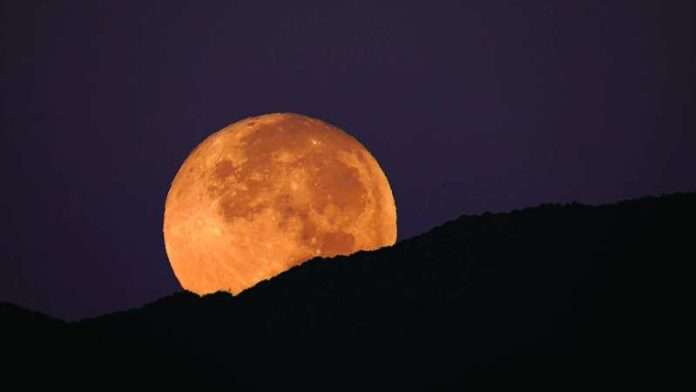The earth’s sky is preparing to receive the “Deer Moon”, which is the first giant full moon in 2023, and it will be seen at the beginning of next week.
July’s full moon is called the Buck Moon. The full moon gets its name because it occurs when male deer, known as bucks, grow their antlers, reports Al-Rai daily.
Another popular name for the full moon for July is the “Thunder Moon”, because of the frequent thunderstorms in early summer. In Europe, the full moon is called the Hay Moon, as it coincides with the hay-gathering season.
And the “giant deer moon” will appear full and brighter than the average full moon, so that its brightness will appear 16 percent brighter than the normal full moon, according to “Russia Today”.
The giant moon phenomenon occurs when the moon’s orbit is closest to Earth, because its orbit is elliptical. The moon is closer to Earth at perigee and farther away at aphelion.
When the full moon coincides with perihelion, it is called a supermoon. During that, the full moon is 14 percent larger and 30 percent brighter than it is when it is at full moon.
Thus, the giant full moon appears to the viewer much larger and brighter than usual.
The closest point of the moon to Earth is called perihelion. The average distance between the full moon and Earth is about 238,900 miles. But the giant moons are a little closer, and the “deer moon” will be 361,934 km away from us.
Although the “Deer Moon” is the first giant moon of the year, along with three other giant moons that will occur on August 1, August 31 and September 29, it will be the smallest among them.
To get the best view of this astronomical event, it can be watched as it rises shortly after sunset, during dusk.
The moon will reach its peak brightness on Monday, July 3, but it will appear full to the naked eye over a period of 3 days, starting from the evening of July 2 until Tuesday, July 4.

















